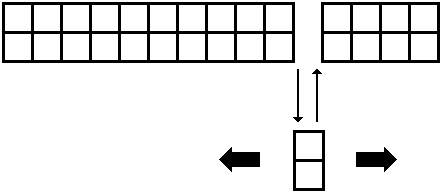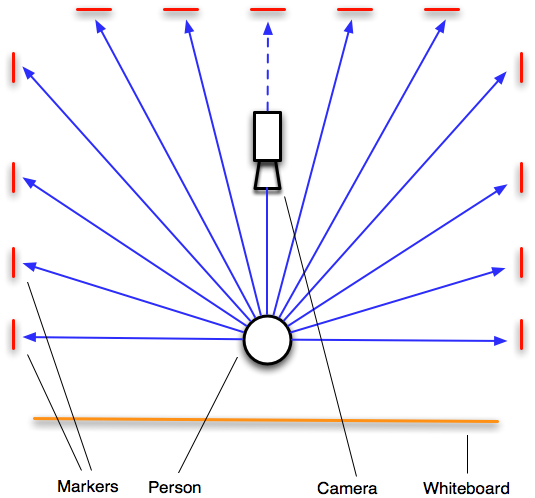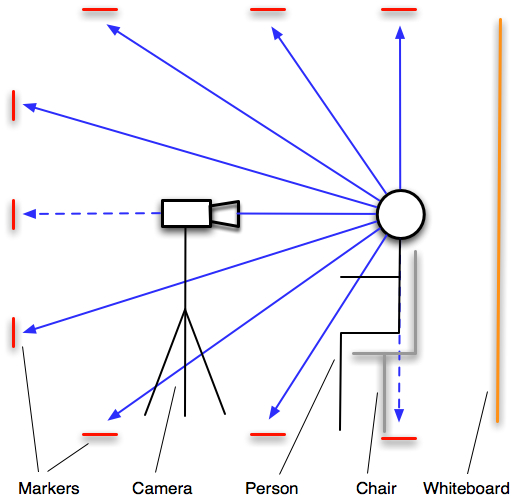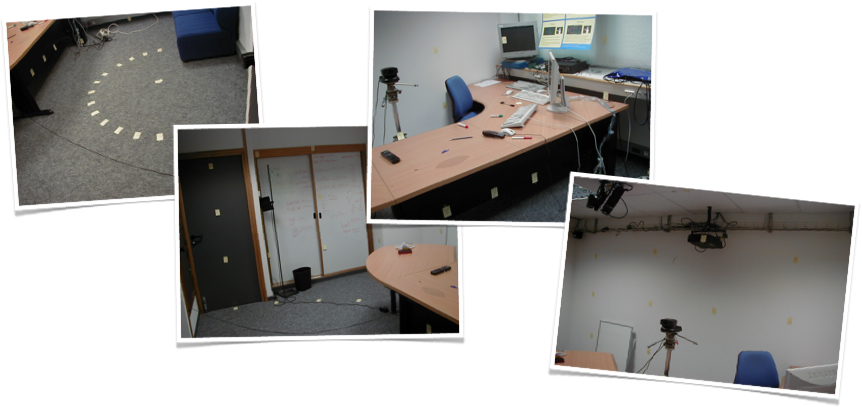person[Id][Serie][Number][Tilt][Pan].jpg
Id = {01, ..., 15}
Number of the person,
Serie = {1, 2}
Number of the serie,
Number = {00, 01, ..., 92}
Number of the file in the directory,
Tilt = {-90, -60, -30, -15, 0, +15, +30,
+60, +90}
Vertical angle,
Pan = {-90, -75, -60, -45, -30, -15,
0, +15, +30, +45, +60, +75, +90}
Horizontal angle.
Each filename is unique. For example, take the file
The text file contains the following elements:
[
Corresponding Image File]
Face
[
Face Center X]
[
Face Center Y]
[
Face Width]
[
Face Height]
3. Testing on Known Faces
Estimating the head pose of known faces is done by splitting the database into two groups. Each
group gathers sets of the same serie of all persons.
The test is done by doing a 2-fold cross validation on these two groups. The picture
below describes the process:
 2-Fold cross validation algorithm. Each square represents a serie. Squares of
the same column are series of the same person
2-Fold cross validation algorithm. Each square represents a serie. Squares of
the same column are series of the same person
4. Testing on Unknown Faces
Estimating the head pose of unknown faces
is done by doing a Jack-Knife (also called Leave One Out) algorithm on the persons of the
database. All images are used for training, except images of one subject, which will be used for
testing. The person to be tested is then changed at each step. This is an exhaustive
algorithm. No images of the same person is both in the training and in the testing parts:
 Jack-Knife algorithm. Each square represents a serie. Squares of the same column are
series of the same person
Jack-Knife algorithm. Each square represents a serie. Squares of the same column are
series of the same person
5. Image Acquisition
All images have
been taken using the FAME Platform of the PRIMA Team in INRIA Rhone-Alpes.
To obtain different poses, we have put markers in the whole room. Each marker
corresponds to a 2D pose (pan, tilt). Post-it are used as markers. The whole set
of post-it covers a half-sphere in front of the person.
In order to obtain
the face centered on image, the person is asked to adjust the chair
to see the device in front of him. The person stands at a distance of 2 meters from the camera. After this initialization phase,
the person stares successively at 93 post-its, without moving his eyes.
All images are obtained by using this method.
 Top sight
Top sight
 Side sight
Side sight
 The FAME Platform
The FAME Platform
6. FAQ
Q: Are nose positions labeled?
A: No, since face labels are provided as rectangles.
Q: Why are filenames so complex?
A: It's a way to both have files ordered (from bottom to top
and right to left) and angles identified within their filenames while keeping them unique.
Q: Which camera model did you use?
A: Sony CCD EVI-D31 Pan-Tilt-Zoom Camera.
7. Example Videos






